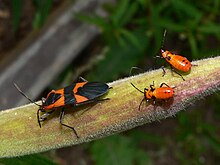
Floradude
-
Posts
2,132 -
Joined
-
Last visited
-
Days Won
1
Content Type
Profiles
Forums
Events
Posts posted by Floradude
-
-
No Podiatrists. We have been round and round on this one.
-
I would let the painter worry about that.
-
 1
1
-
-
Nothing here, but it seems everything is getting more complicated
-
 1
1
-
-
The U.S. National Hurricane Center said Roslyn’s maximum sustained winds had increased to 120 mph (195 kph) early Saturday, and it was expected to grow still further.
The storm was centered about 200 miles (320 kilometers) south-southwest of Cabo Corrientes — the point of land jutting into the Pacific south of Puerto Vallarta — and moving northwest at 7 mph (11 kph).
The forecast called for Roslyn to begin shifting to a northward movement and then northeast, putting it on path that could take it close to Cabo Corrientes and the Puerto Vallarta region on Saturday night or early Sunday before making landfall in Nayarit state on Sunday morning.
-
 1
1
-
-
-
Yes, this satellite picture show it landing well to the north and closer to Mazatlan. Let's hope we can get a good rain or two and not this mist.

-
It may get wet and windy here later today and tomorrow ?

-
-
Thank you for the information Ferret. Unfortunately, this will not work for me.
-
And, where to find something to play them on.
-
I have an anecdote that I should have added to my above message: Speaking of sloshing--
Around about 1970 I was living in an apartment east of Seattle. It was the middle of the week and I had the day off. It was sunny and I was out sitting by the side of pool reading a book. I remember there were also two ladies out there. No-one was in the pool Most people were at work. Suddenly the water in this large pool started sloshing back and forth. I said, half-joking to the ladies, "earthquake." Later that evening on the news we heard that there had been a large earthquake in Alaska.
-
My house in Upper Ajijic must be on bedrock because I did not feel it. I heard it and I saw it. First I heard two pieces of metal banging twice at a high pitch. I looked out the window and saw the water sloshing back and forth in my birdbath. I knew it was an earthquake so I concentrated but I did not feel anything.
That was it. I have lived in Mexico over 19 years and I have never felt an earthquake, but at least I heard and saw this earthquake. I lived in Seattle for 60 years so I know earthquakes.
-
I got my answer from a friend who has a Master's in Insects.
It looks exactly the first one in the picture but does not seem as large.
Large milkweed bug
From Wikipedia, the free encyclopediaJump to navigationJump to searchLarge milkweed bug 
Scientific classification 
Kingdom: Animalia Phylum: Arthropoda Class: Insecta Order: Hemiptera Suborder: Heteroptera Family: Lygaeidae Genus: Oncopeltus Species: O. fasciatusBinomial name Oncopeltus fasciatus Oncopeltus fasciatus, known as the large milkweed bug, is a medium-sized hemipteran (true bug) of the family Lygaeidae.[2] It is distributed throughout North America, from Central America through Mexico and the Caribbean to southern areas in Canada.[2] Costa Rica represents this insect's southern limit.[3] It inhabits disturbed areas, roadsides, and open pastures.[4] Due to this widespread geographic distribution, this insect exhibits varying life history trade-offs depending on the population location, including differences in wing length and other traits based on location.[5][6]
-
I have many milkweed plants scattered around my gardens which I grow to keep my local Monarch butterflies happy. For the past year or so I have noticed a small, cute, colorful insect on or around my milkweed plants. I am wondering what this insect is, and what its relationship to the milkweed might be. Here is a picture...I hope.
-
According to Ajijic Weather 31.72 inches as of today.
-
They are very common in my backyard. I consider them a big caterpillar and put them back in my tree when they crawl on the terrace. I am an avid gardener and not aware of any harm they do. They are few and far between. Now, if you want to talk about Leaf Cutter Ants...
-
 1
1
-
 1
1
-
-
Is something missing in the first blank, black square?
-
A friend in Chula Vista reported the same thing.
At my house in Upper Ajijic it was 0.9 inches. It seemed like it rained here most of the night, quitting around 6 am, but it was a steady rain--nothing hard.
-
It looks like there is a storm front heading our way now at 8:56
-
The plant is thought to be poisonous. They will take over if you let them. I pull the young plants whenever I see them.
-
I had 1.1 inches from that storm from yesterday--roughly 8:15 to 11 am in upper Ajijic
-
 1
1
-
-
I assume the problem is the leak is from the roof. Tracking those can be difficult, but any of the reliable men who do roofs should be able to help you. This is quite common at this time of the year so hopefully someone who had this done will be able to help you.
-
I remember back well over 10 years ago when I was getting my two cards we had the same problem. The office in Chapala often did not have sufficient cards.
-
Even Walmart and other stores sell them from time-to-time.
![[Key Messages]](https://www.nhc.noaa.gov/storm_graphics/EP19/refresh/EP192022_key_messages+png/145010_key_messages_sm.png)

PODIATRIST
in Ajijic/Chapala/Guadalajara
Posted
There are no medical schools of Podiatry in Mexico. If you wish to consult with a physician about your feet you will need to see an Orthopedic specialist.